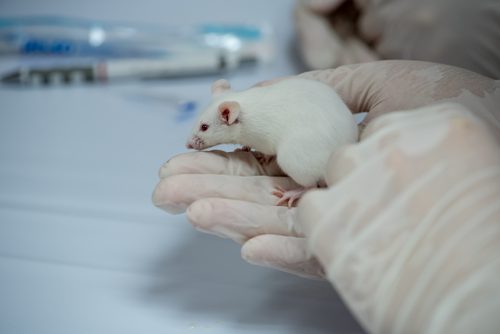Plant Compound Seen to Be Potential Therapy for Lung Fibrosis in Mouse Study

A plant compound called parthenolide significantly reduces lung fibrosis and its associated inflammatory responses, according to a study conducted in mice with idiopathic pulmonary fibrosis (IPF).
The work also exposed the mechanisms behind parthenolide’s actions, providing a deeper understanding of lung fibrosis’ mechanisms and potential therapeutic targets.
The study, “Parthenolide attenuated bleomycin-induced pulmonary fibrosis via the NF-κB/Snail signaling pathway,” was published in the journal Respiratory Research.
In pulmonary fibrosis, uncontrollable proliferation and activation of fibroblasts — cells that produce proteins implicated in wound-healing and tissue scarring (fibrosis) — leads to the accumulation of scar tissue in the lungs, which ultimately impairs their function.
One of the proposed mechanisms behind the activation of fibroblasts is the transition of epithelial cells that line the lungs into fibroblasts or myofibroblasts, through a process known as epithelial-mesenchymal transition (EMT).
Nuclear factor kappa-B (NF-κB) — a protein involved in inflammatory responses — is strongly involved in EMT and induces the production of inflammatory molecules highly associated with the progression of lung fibrosis. Therefore, targeting EMT or NF-κB could be a therapeutic strategy for IPF.
Parthenolide, a natural plant compound isolated from the shoots of the feverfew plant, was shown to have anti-tumor and anti-inflammatory properties. Its actions are exerted mainly through the suppression of NF-κB and associated molecules. However, the therapeutic effects of parthenolide treatment on IPF remain unknown.
Now, researchers investigated the effects of parthenolide treatment in lung cells grown in the lab and in a mouse model of human IPF.
Parthenolide was found to reduce the survival and normal activity of lung fibroblasts grown in the lab in a dose-dependent manner. Considering that fibroblasts are proliferating at an abnormal manner in IPF, a reduction in their survival could have beneficial effects.
Also, the addition of the plant compound to lung epithelial cells grown in the lab reversed EMT features through the suppression of EMT-related molecules and an increase in the levels of epithelial-associated genes.
Researchers also tested the effects of parthenolide in a mouse model of IPF. Results showed that daily administration of the plant compound reduced lung fibrosis and improved the respiratory function of mice, compared to untreated mice.
EMT-related and inflammatory molecules were also reduced after treatment. These effects were exerted through a significant reduction of NF-κB and Snail levels, and in a dose-dependent manner.
Overall, the team concluded that treatment with parthenolide was associated with decreased levels and activity of NF-κB and Snail — a target of NF-κB — suggesting that parthenolide could potentially reduce the inflammatory responses of lung fibrosis.
Also, these anti-fibrotic and anti-inflammatory effects were comparable to or even better than those observed when mice were treated with dexamethasone, which was recently shown to effectively reduce lung fibrosis in an IPF mouse model.
The findings therefore suggest that parthenolide is a “worthwhile candidate compound for pulmonary fibrosis therapy,” the researchers wrote.







